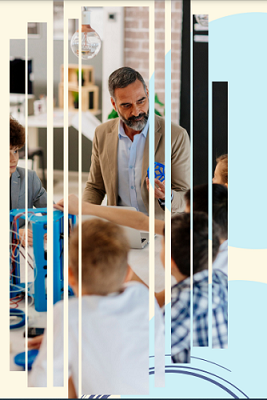Term 4 - 2022
After a successful term 3 at NRICH Learning, we warmly welcome you to another term of growth and knowledge! Join us on our quest to support students achieve their full potential and set them up for their future.
Important Information
Term 4 dates and centres
Learning with Digital Resources
How and why digital resources are
important for diverse education
How to Grow Math Confidence
Learn techniques that can help
students grow confident with maths
Additional Programs

“Let us know what you think about using digital resources for education and what you would like to see in future newsletters!”
Learning with Digital Resources
WHAT ARE DIGITAL RESOURCES FOR LEARNING?
Traditionally, education has been restricted to the four walls of a classroom, a
knowledgeable educator and thousands of pages of textbooks and worksheets. With years of technological advancements, students have limitless resources bequeathed to them to learn topics of interest and to supplement their education.
Now a days, a large amount of education is derived from credible websites, online textbooks, and engaging video content. We may have our doubts about the validity of learning from the internet, but when used correctly, the world wide web can be an invaluable trove of information and education. The key is to use it actively.
This diagram from the “Reimagining the Role of Technology in Education” plan from the US education department (2017) illustrates the many ways students can use their digital devices proactively. Websites like the Khan Academy, TED conferences, the BBC, MIT OpenCourseWare, and YouTube offer rich and diverse learning resources to keep students engaged in content. These materials are then reviewed and expanded on in classroom discussions and activities. Using multimedia while learning is an effective way to engage students and present information in a multitude of way to cement student comprehension of material and thus improve learning outcomes.
WHAT OTHER BENEFITS ARE THERE TO DIGITAL LEARNING?
Digital resources are also freely available wherever you have internet access, allowing students to learn to work independently at home. Working together with your child to schedule independent online study sessions, will teach them to be responsible with their learning, conscious of time management and efficient in their organisation skills. Initially, a monitoring system and regulations should be set in place to ensure students are using the digital resources actively. However, in time students should be able to experiences the wide benefits of digital resources that will highly complement and enhance their education in a traditional classroom.
How to Grow Math Confidence
Learning mathematics is an excellent technique for students to develop their problem-solving skills, comprehension, and flexible thinking. However, students are increasingly doubting their skills in mathematics; they question every step of their work and are not sure if they understand the question.
So how can we help?
BUST MATH MYTHS
Dispelling the binary culture of people either being “good” or“bad” at maths will ensure your child as a solid foundation to build their confidence in mathematics. Students need to be encouraged to learn maths and not believe that they are automatically sorted into the “being bad at maths” category just because they made one mistake. Developing a fluid mindset instead of a binary one will allow a child to develop their math confidence because realistically, every child has the potential to learn maths if they put in the hard work! To do this rememberto “Praise effort, not intelligence.” Instead of praising with “You’re so smart!” try “Great work on this question, I know maths can be tricky but if you keep putting the hard work in, you’ll get it!”
MAKE MISTAKES
“ANYONE WHO HAS NEVER MADE A MISTAKE HAS NEVER TRIED ANYTHING NEW.”
– ALBERT EINSTEIN
Making mistakes should never be criticised because it is a vital part of learning. Instead of stark remarks like “Try again”, we should ask students to show us how they worked out their answer and usually in the middle of explaining their work to you, they willrecognise their mistake and quickly fix it. Let students analyse and learn from their own mistakes as it is a more active form of learning that won’t threaten their self-confidence.
The beauty of mathematics is that the path to an answer is dynamic – there are multiple methods to the same answer. By making mistakes, students can learn the variety of techniques to solve problems which will not only help them when they solve more complex problems but will also allow them to decide which routes they feel most comfortable and confident with.
CREATE A LOVE FOR MATHS
Additional Programs
- Continuing Early Reading Program for young readers. A weekly one-hour program for young readers aimed at developing and finessing their growing reading skills. This program focuses on early learners and children in need of support deciphering letter sounds and recognizing cues to construct meaning when reading. It helps refine the early techniques involved with reading and creates a strong foundation for future reading comprehension and writing tasks.
Contact for any Info
Contact us to find out the details about the services we offer.
0434 678 639
Subscribe to our monthly newsletter
- 2022 NRICH LEARNING. ALL RIGHTS RESERVED.
- admin@nrichlearning.com.au
- Terms & conditions



Leave a Reply